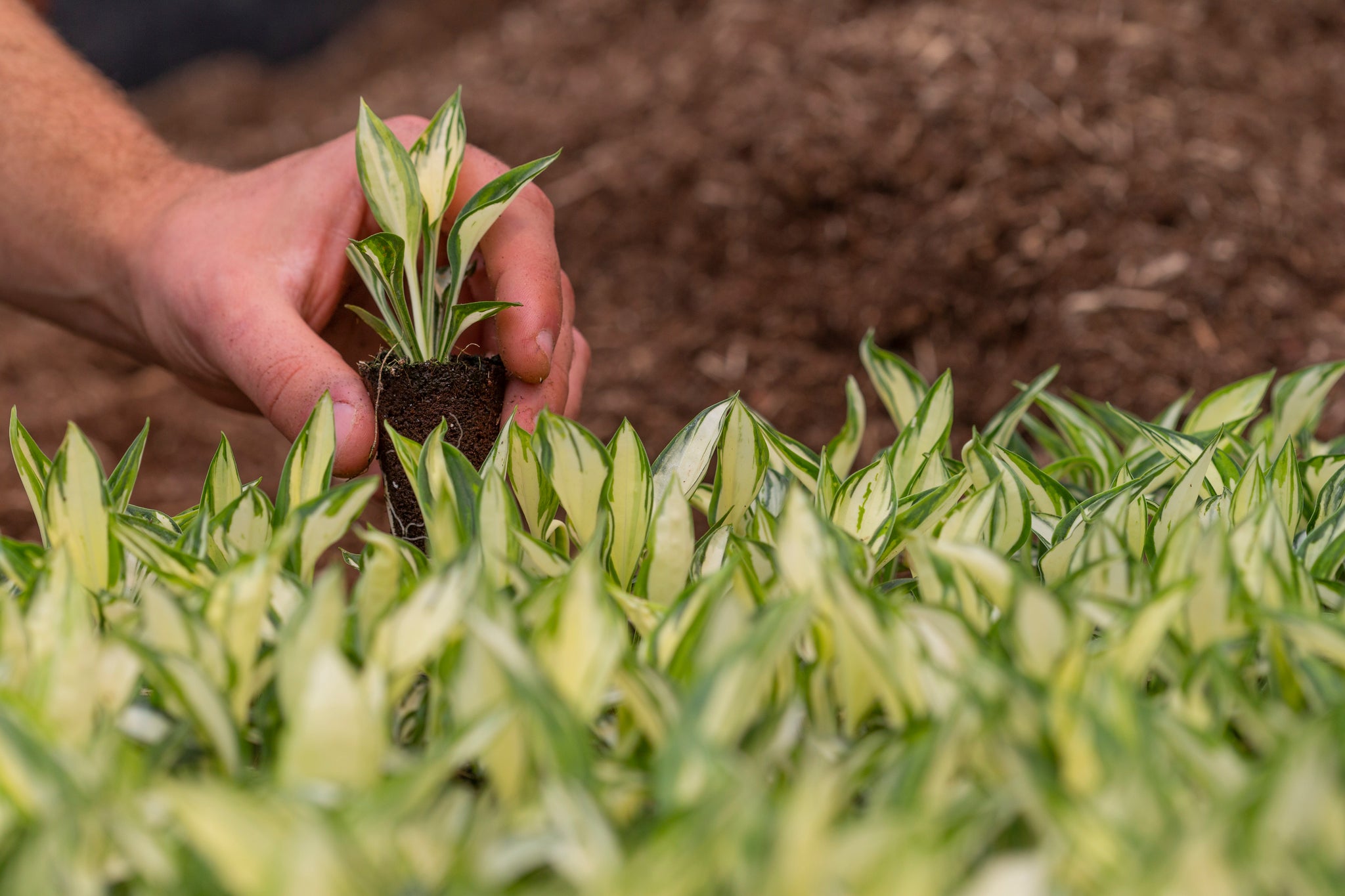
Growing hostas is extremely enjoyable, not to mention addictive, with the selection of varieties now available. Here is a quick beginners guide to growing hostas:
Planting
Position - Hostas are woodland plants so require some level of shade to look their best. There are some varieties that can thrive in the sun (see blog Hostas For Full Sun).
Soil - Hostas are not generally fussy when it comes to soil type, just ensure that it is free draining. Although hostas like to be damp the quickest way to kill them is if they are too wet!
Pots - Hostas are great in pots, especially the miniatures. You can pot virtually every variety of hosta in a pot as long as you have a big enough pot! (For more information on how to grow hostas in pots see blog Growing Hostas In Pots and Containers).
Companions - Hostas look great when many varieties are grown together however there are many other plants that can make excellent companions to hostas such as ferns, astilbes and heucheras.
Maintenance
Hostas do not require a huge amount of maintenance and can be an excellent, hassle free addition to your garden.
Spring - Around late March your hostas will start appearing, first as hard pointed shoots (also known as eyes). Within about 4-6 weeks they will be in full leaf. During Spring there is very little maintenance, just keep an eye on watering and enjoy your plants looking their best.
Summer - During the Summer the more delicate varieties may show signs of sun damage with burning to the leaves. Make a note of these varieties so they can be moved to a more shady position in the Autumn. Make sure watering is regular if needed, especially during the first year of planting.
Autumn - Autumn is the best time to divide or move your hostas if they require it (see blog Dividing Hostas for more information). Your plants will start dying back and will be completely gone by the end of November.
Winter - First job in the Winter is to clear away the dead leaves from the tops of the plants. This is important as slugs and their eggs overwinter in the shelter of the dead leaves, by clearing them you should help reduce any slug issues in Spring. Around February is when you should start to think about slug protecting before your new shoots come up in Spring (see blog Dealing with Slugs and Snails for more information).
Garlic Wash Recipe - Read Now
Dealing with Slugs and Snails - Read Now
Pests and Diseases - Read Now
Blogs - Read Now
